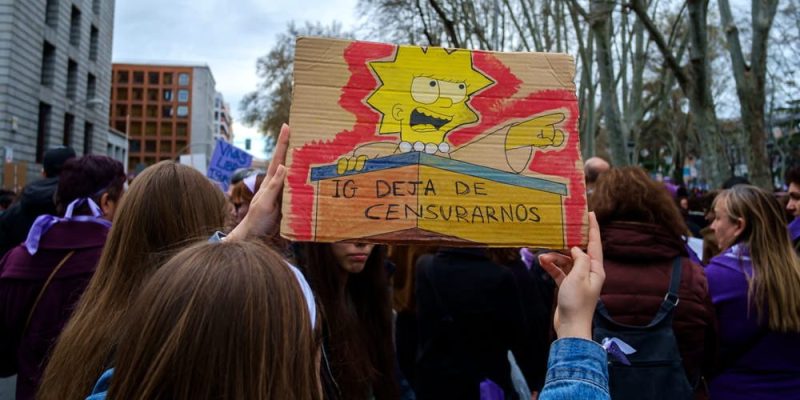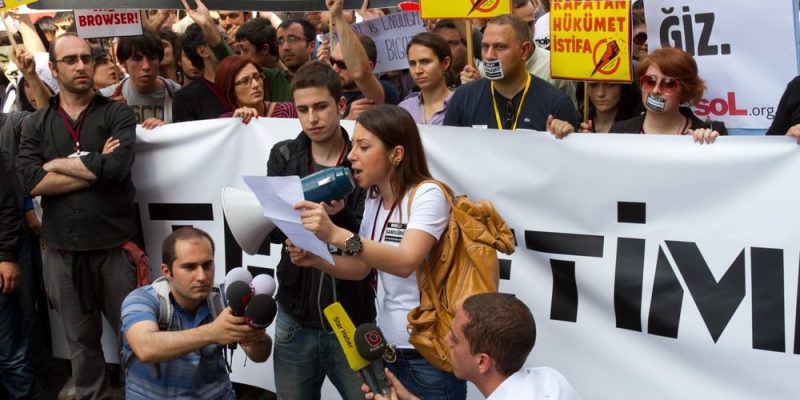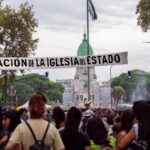We explain what censorship is, what types exist and its relationship with freedom of expression. Also, what is self-censorship.

What is censorship?
Censorship consists of the elimination or modification of artistic or communication material (such as a text, a film or an image) when it is considered by the authorities to be offensive, harmful, inconvenient or contrary to public morality. Those who carry out censorship are known as censors.
This mechanism is considered a form of repression or control that threatens freedom of expression and that can be exercised for ideological, political, religious or moral reasons. Generally, it is carried out prior to the dissemination or publication of the material, in order to filter what is made available to the public, although sometimes it is done later, by removing the material.
Censorship It is common in authoritarian regimes or dictatorships in which the political authority controls what can or cannot be said publicly, so that nothing threatens the established power.
However, even in liberal democracies there is always a margin of censorship and control. For example, it is common for newscasts and movies broadcast on television, during times suitable for all audiences, to censor frontal nudity or certain violent acts. On the other hand, there are often laws that allow censorship of materials that incite discrimination, threaten national security or damage a person's reputation through defamation and slander.
The word “censorship” comes from Ancient Rome and the public office of censora magistrate in charge of preparing the census (census) of the population: there it was determined how many citizens there were, how much wealth they possessed and how much they contributed to the Roman State. However, this censor also monitored how citizens behaved and could demote to a lower social status or eliminate from the list of citizens those who had committed serious crimes, crimes of high treason, or acts contrary to public decency.
Key points
- Censorship is the removal or modification of material considered offensive, inconvenient or contrary to morality by political or religious authorities.
- It is common in authoritarian regimes, where information is controlled to maintain political order and prevent any opposition to the government.
- In fundamentalist religious regimes, censorship is especially applied to materials considered blasphemous or contrary to the prevailing faith.
- It is also exercised in liberal democracies, especially in matters of national security, hate speech and content control for minors.
- In democratic countries, censorship is often criticized by citizens as an attack on freedom of expression.
Types of censorship
There are different types of censorship, which can be classified according to several criteria:
According to the way in which censorship is exercised
- Direct censorship. It occurs when the material that is to be censored is prohibited or modified by the authorities, that is, when censorship is exercised directly on the object or on the means of communication. For example, in a dictatorship it is common for any opinion article that is critical of the government to be banned, calling it subversive or conspiratorial.
- indirect censorship. It occurs when censorship is not exercised directly on the prohibited material, its author or its disseminators, but rather the authority acts indirectly, that is, it collaterally prevents the material from being disseminated. For example, the government may restrict access to the paper of an opposition newspaper, prevent a television channel from renewing its permits, or act in any other way that allows it to censor its opponents without acting frontally.
According to the degree of intervention in the censored material
- Total censorship. It occurs when the censored material is totally prohibited, completely restricting its disclosure or exhibition to the public. For example, this is what happened in the Middle Ages and the Modern Age with books banned by the Catholic Church or Protestant authorities, which were removed from circulation and sometimes burned on a public pyre.
- Partial censorship. It occurs when the censored material is intervened by the authorities to hide or modify a segment, without prohibiting public exhibition or disclosure of the rest of the work. For example, this is what happens with videos with graphic or shocking content in newscasts, in which certain details are blurred or blurred to protect the sensitivity of the audience.
According to the reason that motivates the censorship
- Moral censorship. It occurs when the reasons for censoring the material are moral, that is, when the material exhibits elements that are considered contrary to public morality according to the criteria of the censor. For example, full frontal nudity is often censored in publications intended for the general public.
- Political censorship. It occurs when the reasons for censoring the material are political or partisan, that is, when the factions that exercise the government consider it inconvenient for certain information to be known. This type of censorship is typical of authoritarian regimes, such as the Latin American dictatorships of the 20th century or the People's Republic of China today, but it is also practiced to some degree in democratic countries.
- religious censorship. It occurs when the reasons for censoring the material are religious or dogmatic, that is, when the material exhibits elements that contradict official dogma or are considered blasphemous or disrespectful of the prevailing faith. This type of censorship is typical of fundamentalist religious regimes, such as the Islamic Republic of Iran, which can consider a book blasphemous depending on the way it portrays the Prophet Muhammad or Islam.
- Military censorship. It occurs when the reasons for censoring the material have to do with the protection of state secrets or information considered critical in strategic or national defense terms, so the aim is to prevent it from circulating openly among the public and reaching enemies. For example, the classified files of the Central Intelligence Agency (CIA) in the United States or the intelligence offices of the governments of various countries.
- Corporate censorship. It occurs when the reasons for censoring the material have to do with the defense of corporate or industrial secrets. Often this type of censorship is exercised unofficially, through the influence that a corporation has on a media or broadcasting medium, which allows it to prevent the dissemination of content that is harmful to the company's image. For example, the attempt by some pharmaceutical companies to hide the side effects of their mass-market products.
Self-censorship
Self-censorship is that limitation or censorship that an individual exercises over himself without being formally exercised by a censor. It occurs when creators, artists, thinkers, academics, journalists or media prefer to hide sensitive information, materials or opinions that could expose them to censorship by an authority (such as a government or a religious institution), to the disapproval of public opinion. or the loss of financing from the State or private capital.
This type of censorship is a common consequence of contexts in which censorship has been repeatedly suffered or in which a disqualifying view of certain opinions prevails, and it is considered a phenomenon contrary to freedom of expression.
However, in other areas, such as personal matters, one can speak of self-censorship in a figurative sense to refer to restraint or prudence when speaking, so as not to say something that one may later regret.
Censorship and freedom of expression

Although censorship can have uses compatible with a democratic order, such as for the protection of minors or to protect the military interests of the State, in general censorship is criticized in democratic and liberal societies. It is interpreted as an attack on people's freedom of expression since, with the argument of defending the interests of the State or protecting public morality, selective silencing or political persecution can be exercised.
Throughout history, many artists and thinkers have suffered censorship of their works because the morals of the time did not tolerate their artistic and intellectual expressions or considered them dangerous.
Writers such as the Marquis de Sade (1740-1814) and Oscar Wilde (1854-1900), for example, often saw their works censored or banned, and they themselves were punished with the asylum (Sade) or prison (Wilde). More recently, the author of Indian origin Salman Rushdie (1947-) was persecuted and censored by the Muslim authorities of different countries, after his fourth novel (titled satanic verses), considered blasphemous, banned and publicly burned.
Currently, Most democratic countries contemplate freedom of expression in their constitutional texts which is also enshrined in the Universal Declaration of Human Rights published by the United Nations (UN) in 1948.
References
- Anastaplo, G. (2024). Censorship. Encyclopedia Britannica. https://www.britannica.com/
- Bobbio, N., Matteucci, N. and Pasquino, G. (Dirs.). (2015). Politics Dictionary. 21st century.
- Doyle, A. (2022). Freedom of expression and why it is so important. Alliance.





